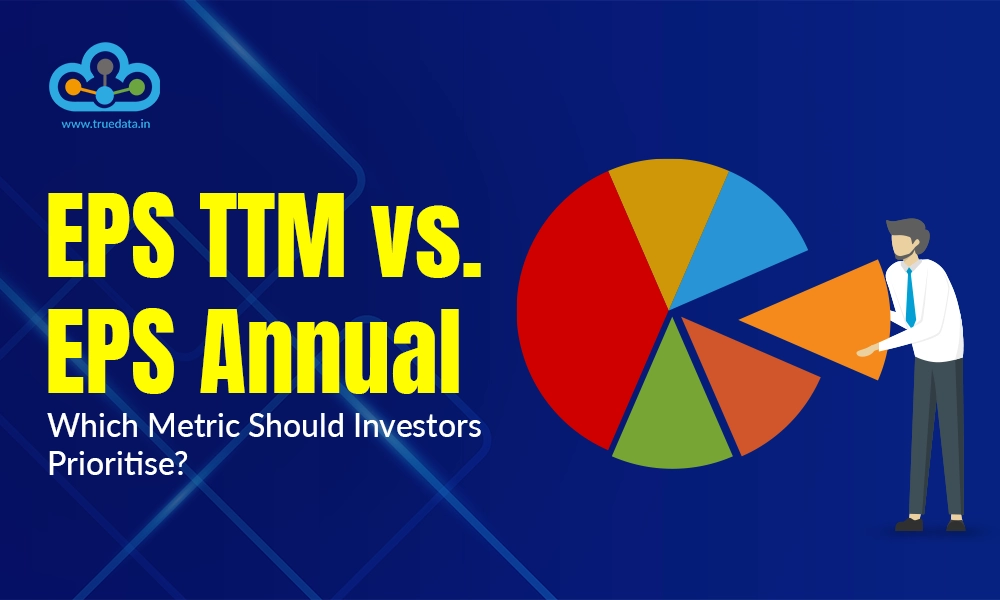 There are very few things that investors agree on, and one of them is that earning money in the trading market involves a lot of strategizing and setting of rules. A new investor jumps into the business with minimal knowledge of the trade markets. There are always moments of doubt - Am I selling the shares sold too early or too late? Hence, it is essential to carefully think about your investing rules and strategies before you start investing your hard-earned money. The most beneficial investing strategy should not only revolve around gaining historical returns; it should work best for the risk tolerance and objectives of an investor. Every investment strategy will vary from person to person. So, if you have not begun crafting investment strategies for yourself, then now is the time to start doing it. A well-planned strategy will support you to drop many possible investments that are not correct for the long-term or may function poorly over time. So, keep on reading about some of the most successful investment trading techniques that the leading investors of the world often use.
There are very few things that investors agree on, and one of them is that earning money in the trading market involves a lot of strategizing and setting of rules. A new investor jumps into the business with minimal knowledge of the trade markets. There are always moments of doubt - Am I selling the shares sold too early or too late? Hence, it is essential to carefully think about your investing rules and strategies before you start investing your hard-earned money. The most beneficial investing strategy should not only revolve around gaining historical returns; it should work best for the risk tolerance and objectives of an investor. Every investment strategy will vary from person to person. So, if you have not begun crafting investment strategies for yourself, then now is the time to start doing it. A well-planned strategy will support you to drop many possible investments that are not correct for the long-term or may function poorly over time. So, keep on reading about some of the most successful investment trading techniques that the leading investors of the world often use.
 The strategy of growth investing is one of the most basic and oldest methods of investing techniques. This active investing strategy includes interpreting fundamental factors and financial statements of the organization responsible for the stock. The purpose is to locate a company whose professional metrics show proof of the potential to increase considerably in the progressing years. Growth investing is not in thoughtless support of speculative investing - it is a strategy that concentrates on capital recognition. Growth investors hunt for organizations that show indications of potential growth through profits and revenues. Investors ask and strive for answers to questions like do electric vehicles have any future before they invest in Tesla. Their investments are based on full-proof evidence of a comprehensive and sturdy desire for products or services. To be successful in a growth investing strategy, a beginner should considerably invest plenty of time to do quality research. Investing in a growth strategy is healthy only in a healthy growing economy. Technology companies thrive best using these strategies as they generally have a high value and persist in developing beyond the valuations. For locating growth stocks, you can use tools like Yahoo! Finance.
The strategy of growth investing is one of the most basic and oldest methods of investing techniques. This active investing strategy includes interpreting fundamental factors and financial statements of the organization responsible for the stock. The purpose is to locate a company whose professional metrics show proof of the potential to increase considerably in the progressing years. Growth investing is not in thoughtless support of speculative investing - it is a strategy that concentrates on capital recognition. Growth investors hunt for organizations that show indications of potential growth through profits and revenues. Investors ask and strive for answers to questions like do electric vehicles have any future before they invest in Tesla. Their investments are based on full-proof evidence of a comprehensive and sturdy desire for products or services. To be successful in a growth investing strategy, a beginner should considerably invest plenty of time to do quality research. Investing in a growth strategy is healthy only in a healthy growing economy. Technology companies thrive best using these strategies as they generally have a high value and persist in developing beyond the valuations. For locating growth stocks, you can use tools like Yahoo! Finance.
 Active trading is a challenging investing strategy. Research shows that less than 5% of the people who invest in this strategy see a reasonable success rate, and a very minute percentage of traders manage to get stellar returns. Active trading tools focus on technical analysis and the price of the stock instead of the analysis related to the underlying business. There are four types of trading styles that investors can use in active trading. These are- day trading, position trading, swing trading, and scalping. Day trading implies buying and selling the stock within the very same day. Generally, market makers or trade specialists perform this type of active trading. Position trading is similar to the buy and hold strategy - using longer-term plans ranging from every day to monthly. Trend traders carry out this strategy by jumping into the ongoing trend in the market. Once a trend breaks, swing traders take their shot. Similar to day trading, swing trading is also only for a short period. Scalping is one of the fastest-employed investing strategies - scalpers do not make large moves or move large volumes of money. Instead, they try to make profits from smaller moves. Active traders often utilize price data from charting programs to analyze the newest trends and price patterns. This step helps them to understand future price changes.
Active trading is a challenging investing strategy. Research shows that less than 5% of the people who invest in this strategy see a reasonable success rate, and a very minute percentage of traders manage to get stellar returns. Active trading tools focus on technical analysis and the price of the stock instead of the analysis related to the underlying business. There are four types of trading styles that investors can use in active trading. These are- day trading, position trading, swing trading, and scalping. Day trading implies buying and selling the stock within the very same day. Generally, market makers or trade specialists perform this type of active trading. Position trading is similar to the buy and hold strategy - using longer-term plans ranging from every day to monthly. Trend traders carry out this strategy by jumping into the ongoing trend in the market. Once a trend breaks, swing traders take their shot. Similar to day trading, swing trading is also only for a short period. Scalping is one of the fastest-employed investing strategies - scalpers do not make large moves or move large volumes of money. Instead, they try to make profits from smaller moves. Active traders often utilize price data from charting programs to analyze the newest trends and price patterns. This step helps them to understand future price changes.
 The strategy of value investing became famous due to the illustrious investor Warren Buffett - value investing is the discount shopping of financing strategies. Value investors purchase undervalued stocks with longer-term goals. Their purpose is to collect the rewards when the businesses reach their real potential in the coming years. A value investor should always be active and aware of the market news. For instance, a value investor would dip up shares of a historically thriving car corporation at the time of dropping in-stock pricing due to the release of a terrible new model. This is because the investor would consider the latest model to be a fluke. He believes that the organization will bounce back up over some time. Partly value investing is signified by the belief that some level of illogicality exists in the trade market. Theoretically, this illogicality presents possibilities to acquire stocks at a reduced price and earn money from the same. Value investors do not need to run through volumes of data to get deals. Investors can refine strategies anytime, but this can prove to be expensive.
The strategy of value investing became famous due to the illustrious investor Warren Buffett - value investing is the discount shopping of financing strategies. Value investors purchase undervalued stocks with longer-term goals. Their purpose is to collect the rewards when the businesses reach their real potential in the coming years. A value investor should always be active and aware of the market news. For instance, a value investor would dip up shares of a historically thriving car corporation at the time of dropping in-stock pricing due to the release of a terrible new model. This is because the investor would consider the latest model to be a fluke. He believes that the organization will bounce back up over some time. Partly value investing is signified by the belief that some level of illogicality exists in the trade market. Theoretically, this illogicality presents possibilities to acquire stocks at a reduced price and earn money from the same. Value investors do not need to run through volumes of data to get deals. Investors can refine strategies anytime, but this can prove to be expensive.
 Investors using this strategy believe in spending more and more time in the market. The approach is used by purchasing investment securities and keeping them for longer terms as the investor considers long-term returns to be more reasonable. This approach is in contradiction to absolute trade market timing, which generally has a trader purchasing and selling over smaller intervals to purchase at economical rates and sell at sky-high rates. The buy-and-hold trader will demonstrate that sustaining for the long term needs less regular trading as compared to other strategies. Consequently, dealing costs are reduced, which will improve the complete net return of the finance portfolio. One of the most beneficial choices to contemplate for a buy-and-hold approach is index funds. It is a kind of mutual fund in which you add the holdings to balance or follow a specific market index.
Investors using this strategy believe in spending more and more time in the market. The approach is used by purchasing investment securities and keeping them for longer terms as the investor considers long-term returns to be more reasonable. This approach is in contradiction to absolute trade market timing, which generally has a trader purchasing and selling over smaller intervals to purchase at economical rates and sell at sky-high rates. The buy-and-hold trader will demonstrate that sustaining for the long term needs less regular trading as compared to other strategies. Consequently, dealing costs are reduced, which will improve the complete net return of the finance portfolio. One of the most beneficial choices to contemplate for a buy-and-hold approach is index funds. It is a kind of mutual fund in which you add the holdings to balance or follow a specific market index.
Warren Buffet is widely known to be the most flourishing trading investor in history. In the year 1986, he was momentarily the world's richest man, with a net value of $16 billion, grateful entirely to the fee revenue from investment management and his stock-picking abilities. His worth is now over $20 billion. His advice to new investors is firstly look at the quality of the organization, and then the rate. If you locate a company with bad quality, it is better not to purchase it simply due to low pricing. Trade investors buy a particular company with a vision as those companies meet their criteria or expectations. Nevertheless, many of the investors do not let go of a company's stock even after the company does not match with their strategy. Warren Buffet suggests and follows the rule to let go of an organization's stock once it does not satisfy his criteria.
Peter Lynch is a growth and recovery investor who began as an analyst in the year 1969. By the year 1974, he was promoted to director of research. In the year 1990, he decided to take early retirement so that he could give more time to his family; by that time, the Fidelity Magellan fund reached a whopping value of $14 billion. Lynch has written several books on investing - he follows three strategies quite diligently - Always buy what you understand, do your homework sincerely before investing, and invest in stocks for the long term. By implementing his teachings and our perceptions, investors can discover more about financing while communicating with the world, presenting the means of investing as fun and successful.
His specialty in trading is short-term speculation. He specializes in currencies and bonds, turning comprehensive commercial trends into highly leveraged movements. In the year 1970, he established Soros Fund Management and is currently working as its chairman. Since November 2018, his net worth has reached $8.3 billion. Some companies that are a fraction of his commercial portfolio are Alphabet Inc., eBay Inc., Visa Inc., Colgate-Palmolive Co., and Allergan PLC. The theory of reflexivity is one of his fundamental investment strategies - based on estimating the monetary value of assets based on the feedback of the industry. In the field of finance and economics, George Soros is known to be the champion of reflexivity theory.
Picking an investment style is similar to picking investments; every investment trader is unique, and the most suitable approach is the one that gives the best returns for their sole investment purposes and risk tolerance. Also, with a plethora of options available online, make sure not to get confused by unusual strategies. Begin with something that is tried and tested over time and is helpful for you in the long term.

Investing in stocks is one of the most effective ways to build long-term wealth....

The year 2023 began with a bummer for the Indian stock markets which saw a sign...

As we move into the second half of 2025, global trade tensions continue to domin...